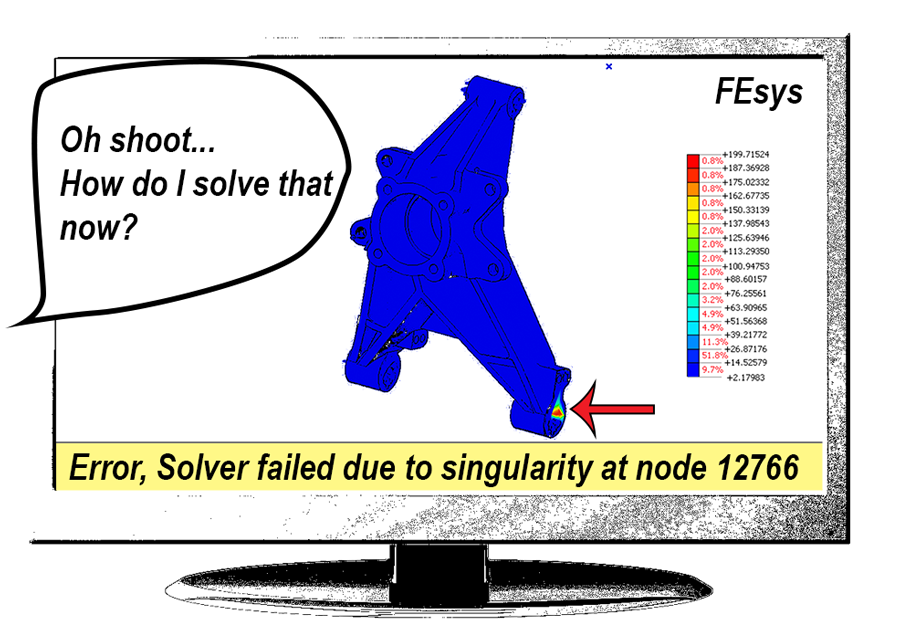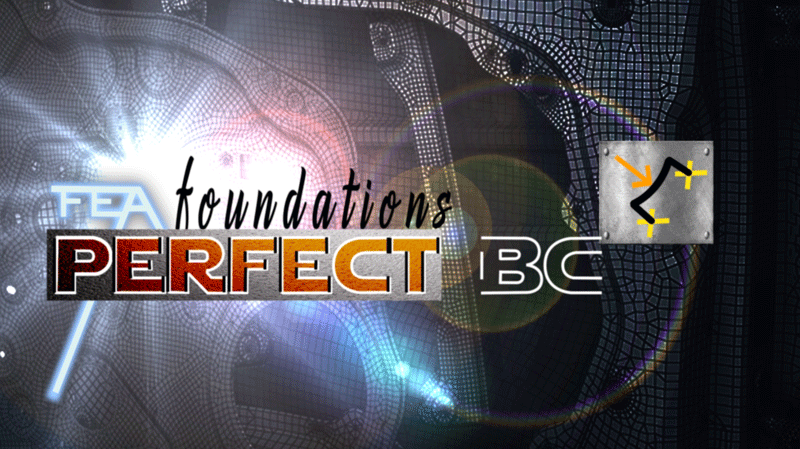If you ever used FEA analysis or if you would like to start using FEA, this may be the most exciting message you will ever read.
Here is why: My name is Cyprien Rusu and some time ago I had a lot of problems to set the correct boundary conditions of my FEA model. My model was never converging and I was always getting wrong results. Actually, I didn’t just have problems, I was desperate.
I had to finish my project quickly, but the time was running out and I couldn’t find why I was getting incorrect results. I could tell it has something to do with boundary conditions, but I didn’t know in details where lied the exact problem. I felt I was losing confidence in myself and in my project even when I was so close from the finish line.
Just when I had an urgent project to finish, it was always like that…
To solve my problem, I started to read a lot of books, along with everything I could find on the Internet. There was so much information available that I felt overwhelmed and it really didn’t solve my problem. And even when I was just changing slightly the boundary conditions, the results showed massive difference…and it drove me CRAZY
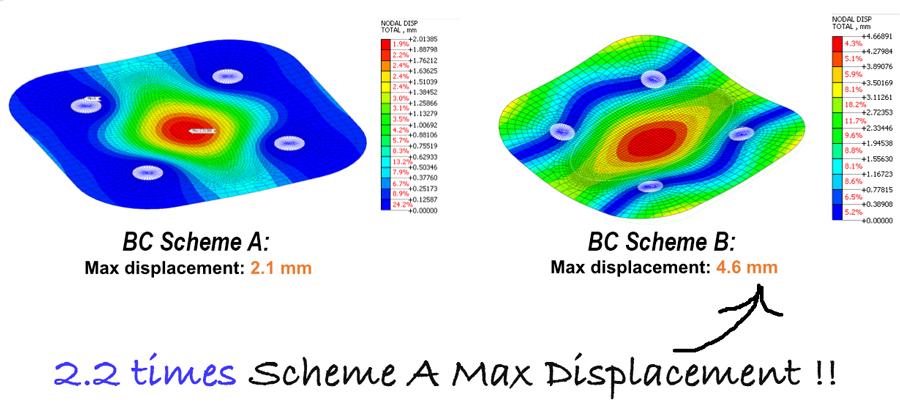
Then one day, everything started to make sense…I started to connect the dots together from the hundreds of sources I learned and I came up with a certain kind of system to assign boundary conditions that gave always the most accurate results.
I was living in Seoul at that time and my colleagues laughed at me. They thought it was a big joke. They said they never saw such kind of system and that it didn’t exist. In fact, one of them even wanted to prove to me by A+B = C that he never got accurate results because simply FEA was like that…
Oh yeah? Well, I didn’t really care. I still thought my system was good and I started to test it with all the old models that never gave satisfying results, and all of a sudden… the errors started to decrease and decrease until they went dramatically close to the test results.
I used this system again and again and everytime I used it, it gave accurate results and I knew that I had discovered something.
What’s the bottom line? Simply this: That simple system helped me to finish more than 10 projects that had been delayed for a long time.
Think about it: Those projects were incredibly important for my company and I was able to bring a solution when no one before me was able to do so.
I was able to use fully the power of FEA simulation to finish those projects and get an incredible benefit to my employer. And what kind of project was that? Actually… it doesn’t matter. You see, the magic was not in the project…it was in the system!
FEA is a system and you have to understand all the components of this system to become an FEA specialist…starting with boundary conditions
Do you have some FEA project to finish?
If so, you can use the same system I used in my projects to finish your own project in no time and with the best accuracy you will ever get.
But what if you don’t have a project? Well, you can also take what I teach in my course, learn it and become the best in your field using this simple system.
Who needs this course?
- Are you a graduate or undergraduate student who would like to finish quickly a project, a master thesis or a Ph.D. involving FEA simulation?
- Are you a professor who would like to teach FEA in the best possible way to his students?
- Are you a mechanical designer who needs to accomplish a project before an ultimate deadline knowing that you made the right design choices and that your results are totally accurate?
- Are you a professional FEA analyst who would like to get an in-depth understanding about FEA boundary conditions in order to refine your analysis methods and to improve your speed to analysis complex FEA assemblies involving hundreds of boundary conditions?
If you answered “yes” to any of the above questions, you should try my “FEA system idea”. You can find out all about it in my course called…
What will I learn in this course?
This course will take you from the theory of boundary conditions (module 1) to the strategy behind assigning correctly boundary conditions (module 2) to the core of the problems causing boundary conditions problems (module 3).

It integrates practical examples and actionable step-by-step algorithms and techniques that will give you all the tools to handle any kind of boundary condition problems!!
With this knowledge, you will not only learn to solve quickly your boundary condition headaches, but you will also learn to use the power of FEA to solve real engineering problems and become an expert in FEA boundary conditions!
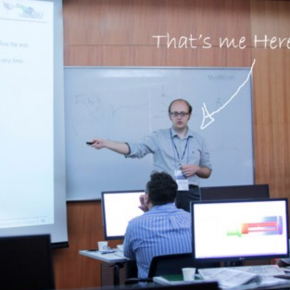 Being a great engineer is all about having the right frameworks and systems to detect, analyze and solve real problems that appear in everyday’s life… and this is exactly what I am providing in this course!
Being a great engineer is all about having the right frameworks and systems to detect, analyze and solve real problems that appear in everyday’s life… and this is exactly what I am providing in this course!
This is far the best material I ever created on FEA boundary conditions!
Hundreds of FEA students followed my free webinars on Youtube, but this course is definitely the most advanced material you will ever get on boundary conditions!
What do I get after I purchase this course?
- You get a complete lifetime access to the 3 modules and 6 lessons of the course fully recorded in video format. You can access those video anytime you want through your personal course vault.
- Each lesson is also downloadable in PDF format
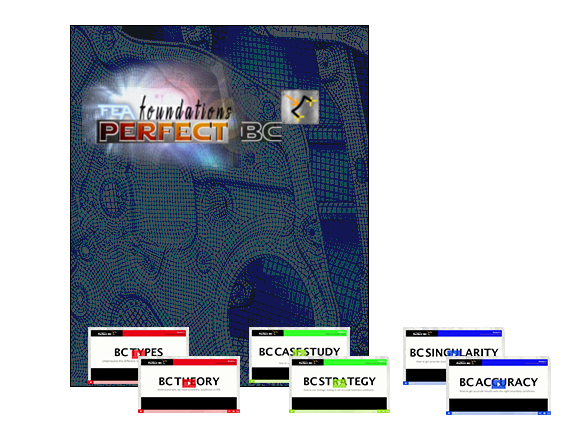
How do I join the course ?
- Purchase the course by clicking on the Purchase button below
- You will be redirected to the paypal website where you have to enter either your paypal credentials or directly your credit card information if you do not have a paypal account
- After completing the purchase on paypal, you will receive an email with your student login and password
- Using these credentials, you can log into your courses section where you have a lifetime access to your course “Perfect BC”
How much does the course costs?
- The lifetime access to the course costs 97$
- Please note that this cost will increase next time the course will be launched as the course will be improved over time
- If you purchase it now, you will have access to all the new materials added and the revisions made to the course
I also provide you a 30 days money back guarantee, so you can try the course for 30 days and if you aren’t fully satisfied, I’ll send you back the money without any question asked.

Here’s what I will teach you in the 3 modules and 6 lessons of the course:
Module #1 Understanding boundary conditions
Have you every noticed how much having knowledge is important to do engineering? I bet that if you came so far, you probably know the value of having the knowledge…
The thing is that it’s often difficult to understand because the real knowledge we have to know is often distilled in the pages of thousand books, between complex equations and all the mechanical stuff… That’s okay if you have the time to study…but there are ways to study faster and better by getting immediately the right knowledge you need.
If you know immediately the important things to know and if you are able to study those abstract concepts with simple words and the help of an expert, you make huge progress in no time, and you become an expert too.
That’s how learning works and that’s what we will study together in this first module of my course.
Lesson #1 BC Theory: Understand why we need boundary conditions in FEA
Have you noticed that this word « Theory » always comes back when you study engineering? That’s because everything is based on a theory in the world.
If you know this theory, you have an incredible advantage over those who don’t because you understand the « why ».
Knowing why we need boundary conditions in FEA is what makes you stronger in understanding how mechanical systems actually work.
Everything has a purpose in life and if you don’t see it, that’s because you lack the knowledge to make this connection.
That’s why in this first lesson, we will be focused on understanding boundary conditions from the theoretical level, but also at the practical level.
Lesson#2 BC Types: Understand the different types of boundary conditions
Beginners in FEA tends to believe that « boundary conditions » mean « constraints » of your model, but that’s not true. In fact, there are 3 types of boundary conditions that you should absolutely know.
In this lesson, we will review together all the types of boundary conditions, the difference between them and also all the essential things to know that are usually not taught in your FEA textbook.
Module #2 Setting correct boundary conditions
Have you ever set boundary conditions without really thinking about how you did it just to analyze your model and get results quickly? That’s pretty dangerous because results depend on boundary conditions a lot and if you don’t even consider them in your FE analysis strategy, you are making a HUGE mistake.
…But don’t worry, we ALL do that at first when we don’t know there is even a strategy behind setting boundary conditions…me too.
In fact, when another more FEA-skilled engineer told me that I had to take care of my boundary conditions, I barely listened… thinking maybe he was just over-cautious.
After few years, I discovered that boundary conditions are one of the major factors impacting the quality and the accuracy of your results and I developed my own strategy to set boundary conditions that I called the « Cyclic assumption » technique.
That’s what we will study in depth in this module
Lesson #3 BC Strategy: How to use strategic testing to set accurate boundary conditions
Strategic testing is my own strategic approach to solving many engineering problems and I will share that with you in this lesson. This strategy is not only valid for FEA, but also for many other engineering and even non-engineering topics and you will get an incredible knowledge by learning this way of seeing things.
The cyclic assumption technique is derived from this strategic testing approach that I developed and is created especially to solve boundary condition problems. That’s a framework that will help you to define dynamically boundary conditions so you always find the best boundary conditions scheme for your model.
Lesson #4 BC Case Study: How to use cyclic assumption practically
As Emmanuel Kant said: « Practice without theory is blind, while theory without practice is powerless »…that’s why in this lesson, we will step to the practice and see on a concrete example how to use this cyclic assumption technique to solve a real FEA analysis problem to get a proper boundary condition scheme.
Module #3 Solving boundary condition problems
When I started doing FEA, I was getting problems everywhere in my model, nothing worked correctly and in fact, I noticed that I was spending the biggest amount of my time to solve the random boundary condition problems appearing every time.
When you get good at this, you start to understand why your boundary condition scheme was wrong and why your model fails and you start to make faster decisions and corrections until you almost don’t even need to think about how you do it.
That’s probably why all FEA specialists won’t tell you how they do their modeling… that’s not because they don’t want to…that’s because it became a second nature to them and they became so strong at solving FE problems that the solution just pop-up in their mind and they don’t know how…
But I have found that you actually don’t need to wait that you reach this point of understanding after years of practices, you can go much faster if you do some little efforts to understand the major problems beforehand and if you have some way to tackle those problems right away.
And that’s what we’re going to learn in this module!
Lesson #5 BC Accuracy: How to get accurate results with the right boundary conditions
Do you know how to define accuracy? Everyone in the « FEA sphere » talks about accuracy because it is simply the most important factor that will guarantee that your results are correct….but you know, some people talk about accuracy without really understanding it and that sadden me all the time…
So I decided I should explain in details how to define and how to reach accurate results and also give you a basic framework to think about boundary condition problems in terms of accuracy.
This lesson is quite long as you imagine…there are always a lot to say about problems and to correct them and that’s one of the main jobs of the engineer to understand that in deep details.
Lesson #6 BC Singularity: How to handle singularities and solve local accuracy problems
Now finally… one of the most painful problems for many engineers are the singularities. Those beasts can create a real havoc in your model without you even notice their influence….and that’s sad to say but many models have to be totally rebuilt just because of singularities…you definitely don’t want that.
So, as usual, knowledge is the enemy of singularities and this lesson will give you the tools to fight against them without losing your precious mind.
Ok! That’s it…you know now everything you will get inside my course so if you think that you need this knowledge…go for it!
This course is not for everyone, though… it is only designed for the people who don’t fear to say “I have to learn to improve and become better”. The people who are willing to put their current knowledge on hold, test new things and take action. Those people will benefit immensely from this course.
PS: Don’t forget that I also provide a 30 days money back guarantee, so try it and if you aren’t fully satisfied, I’ll send you back the money without any question asked.

